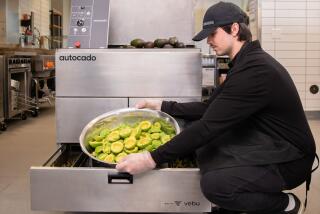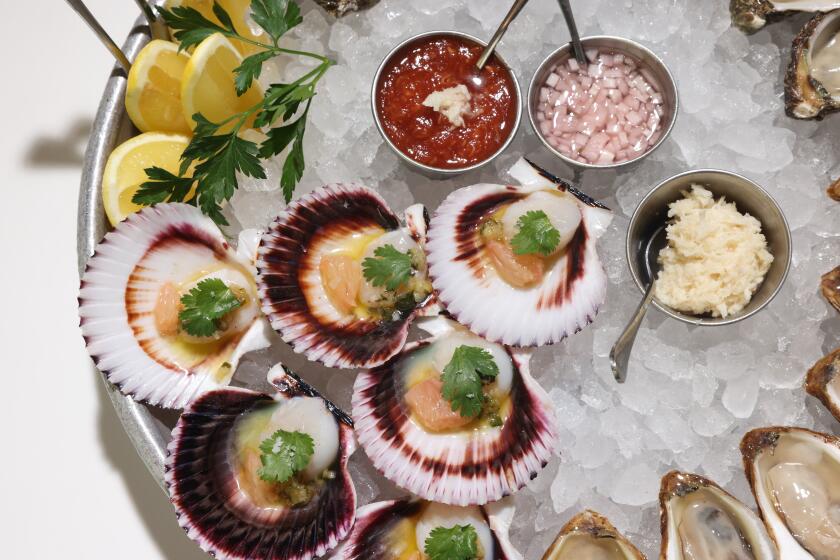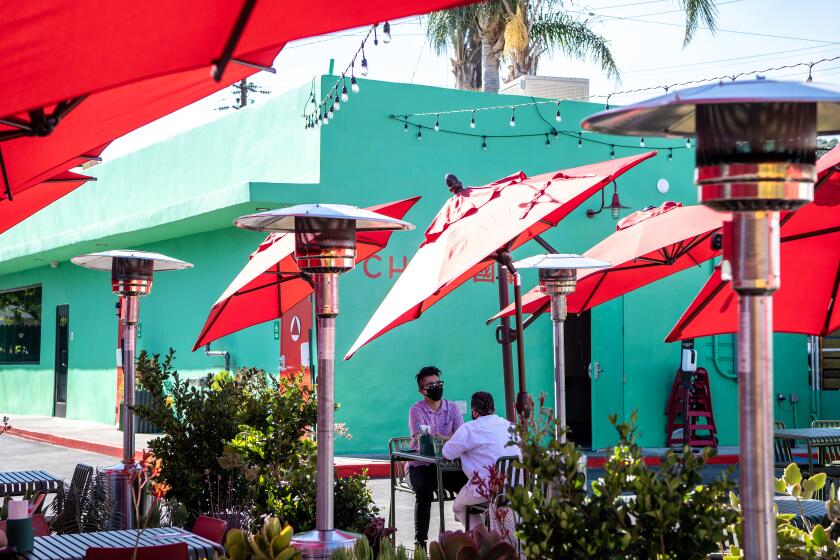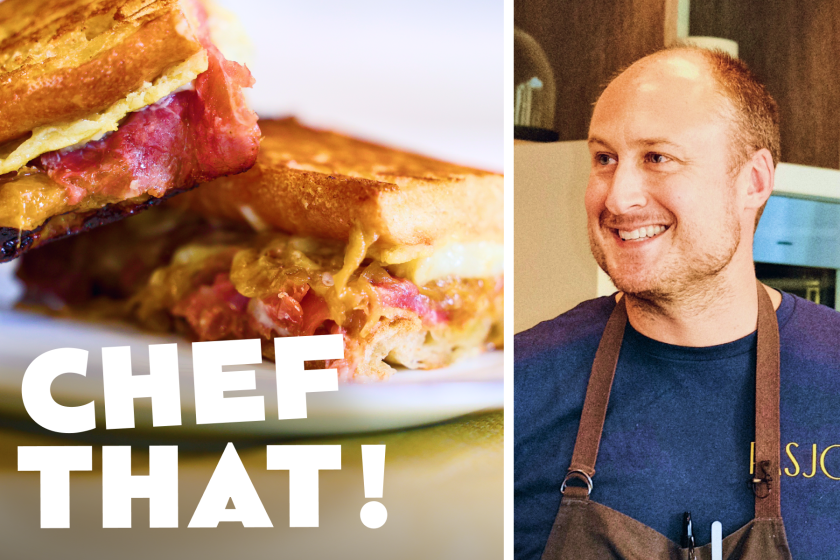Brewers Struggle With Consumers’ Changing Tastes, Rivals’ Marketing
Beer was Joe Siino’s alcoholic beverage of choice for years. But as he shared a table with friends recently at the Villa Sorriso restaurant in Pasadena, Siino sipped a glass of Chardonnay.
“I used to never drink hard liquor and would drink wine only occasionally,” said Siino, 42, a computer executive who lives in Berkeley. “Now I rarely drink beer,” partly because it tends to stretch his waistline, he said.
Benjamin Franklin once penned that “beer is living proof that God loves us and wants us to be happy,” but today a growing number of Americans like Siino are finding pleasure in other drinks, much to the dismay of U.S. beer makers.
Long a mature business that has struggled to manage even skimpy annual gains, the $75-billion U.S. brewing industry now finds itself locked in an even tougher battle: maintaining its appeal at a time when consumers are increasingly choosing wine, spirits and cocktails over suds.
The shift reflects stepped-up and innovative marketing by the wine and liquor makers, as well as Americans’ increasing yen for variety in all consumer products, executives and analysts said.
Brewers also concede that they’ve been slow to respond with new beers and promotions of their own that tap into the public’s desire for more distinct, sophisticated and image-grabbing drinks, especially those that contain fewer calories than beer.
“We’re in the age of individualism,” when Americans can “get just about anything they want styled to their every whim,” whether it’s sneakers or downloaded music, said Robert Lachky, an executive vice president at Anheuser-Busch Cos., the nation’s largest brewer, with nearly 50% of the domestic market.
“We have to grow our industry, and the only way is to innovate and connect with the consumer in a different way,” he said.
Anheuser-Busch and its two main domestic rivals -- Miller Brewing, a unit of London-based SABMiller, and Molson Coors Brewing Co. -- are trying to connect with new brands, redesigned packaging and advertising, and more direct marketing beyond the blanket television and radio ads that have long been the industry’s staple.
But slowing the incursion of wine and spirits also will require brewers to stop battling only one another and jointly “find the right message” to shift consumer preferences back to beer, “and they haven’t done it yet,” said Harry Schuhmacher, publisher of the trade journal Beer Business Daily.
In the first half of this year, U.S. beer shipments fell 1% to 105.5 million barrels from 106.7 million barrels in the same period a year earlier, according to another trade publication, Beer Marketer’s Insights. That followed a meager 0.9% increase in all of 2004, to 206.1 million barrels.
As a result, first-half profit at Anheuser-Busch this year dropped 8.2% to $1.12 billion from $1.22 billion a year earlier, while its six-month sales inched up only 1.3% to $7.6 billion from $7.5 billion.
The St. Louis-based giant -- brewer of stalwart brands such as Budweiser, Bud Light and Michelob -- also said full-year 2005 earnings would trail the previous year’s results, excluding one-time gains, because of the challenging market.
Anheuser-Busch’s stock, which traded above $50 a share three years ago, closed Friday at $43.04 a share. Montreal-based Molson Coors’ stock, after reaching the mid-$70s earlier this year, ended Friday at $64.01 a share.
To be sure, beer still accounts for more than half of U.S. alcoholic consumption and has legions of hard-core fans such as Mike Romero, a Pasadena sales manager who was enjoying a Sierra Nevada beer at Villa Sorriso.
“I like the taste of beer, rather than the sweetness of wine and mixed drinks,” said Romero, 46. “If I have a different drink, it will be a scotch, but that’s not very often.”
Sluggish growth also isn’t new for beer, whose origins are believed to be more than 10,000 years old. Over the last two decades, brewers have used a variety of techniques to perk up sales, including price cutting, aggressive TV ad campaigns -- think talking frogs and lizards -- and occasional new brands. Microbrews and, more recently, imports have been one bright spot for the industry. Their growth has at least partly offset declines in some major domestic brands.
Overall, though, “we suffered to a great extent from sameness” with comedic ads that might have humored the public but left it thinking that most beers “were the same thing dressed up in different labels,” said Miller Chief Executive Norman Adami.
The problem appeared to be validated this summer in a Gallup poll that jolted the beer industry.
It found that 39% of Americans said they drank wine most often and that 36% said they usually chose beer -- the first time that wine had trumped beer since Gallup began asking the question in 1992.
Moreover, 48% of Americans 18 to 29 years old -- one of the industry’s prime demographic groups -- said beer was their preferred drink, which was “down a staggering 23 points from 1992-1994,” Beer Marketer’s Insights noted.
Conversely, the number of consumers in that age group who said they usually bought spirits or mixed drinks more than doubled from 1992 to 32% from 13%, the poll found.
The results showed “a crumbling of the once-dominant positioning of beer among young adults,” Gallup said.
To be sure, analysts noted that there could be a difference between what survey respondents say they drink and what they actually purchase. Even so, the results put the beer industry’s problem into stark relief.
“If beer loses its relevance, it’s because we in the beer industry got out-marketed,” said Adami, whose breweries include one in Irwindale. “We can’t allow ourselves as an industry to bore the consumer.”
Now, Miller and its rivals are trying to use more direct marketing rather than just relying on national TV and radio ads. That means putting more ad dollars into the Internet, regional cable channels and other local media. They’re also holding more sampling events for consumers and briefings for bartenders.
Anheuser-Busch, which has a brewery in Van Nuys, has earmarked more than $30 million “to get more [salespeople] on the street,” sending them to bars, clubs and restaurants, Lachky said.
Anheuser is pitching not just Bud Light and its other mainline brands but also about 40 other brews that it hopes quench consumers’ thirst for unique drinks, he said. It’s also rolled out new brands such as BE and Tilt, which contain caffeine and ginseng, along with Budweiser Select, a lower-calorie brew that is seen as an upscale version of its mainstay Budweiser brand.
Milwaukee-based Miller Brewing has been trying to reinvigorate its existing major brands with new ad campaigns that often abandon the sitcom-style of commercials that dominated the industry.
Miller Lite, for instance, emphasized its taste, quality and appeal to low-carb fans, and its market share jumped to 8.4% at the end of 2004 from 7.6% a year earlier, according to Beer Marketer’s Insights.
Miller also is rolling out the first marketing overhaul of its venerable yet stagnant Miller High Life brand in eight years, with ads featuring a series of thoughtful still photographs and a female narrator urging viewers to “Savor the High Life.”
Whatever the message, the brewers have to jointly reach a broader audience if they hope to fend off the growth of wine and mixed drinks, Lachky said. “What’s missing now is making sure we have an industry voice that starts telling people the broader value of beer,” he said.
At least one of the nation’s most famous value investors, billionaire Warren E. Buffett, apparently is listening.
In April, Anheuser-Busch disclosed that Buffett’s Berkshire Hathaway Inc. had bought a significant stake in the brewer, although it’s below the 5% threshold that requires an investor to report the holdings to the Securities and Exchange Commission.
Buffett declined to comment on the investment. But he and other money managers who are loading up on brewing stocks know that the beer companies still have potent weapons to rekindle their growth, including huge ad budgets and beer’s No. 1 ranking among drinks, said the Beer Business Daily’s Schuhmacher.
“The resources are there” for the beer makers to deal with consumers’ changing tastes, he said. “At least they’re attempting to do something about it. Whether they’re doing the right things, I don’t know.”
More to Read
Eat your way across L.A.
Get our weekly Tasting Notes newsletter for reviews, news and more.
You may occasionally receive promotional content from the Los Angeles Times.











